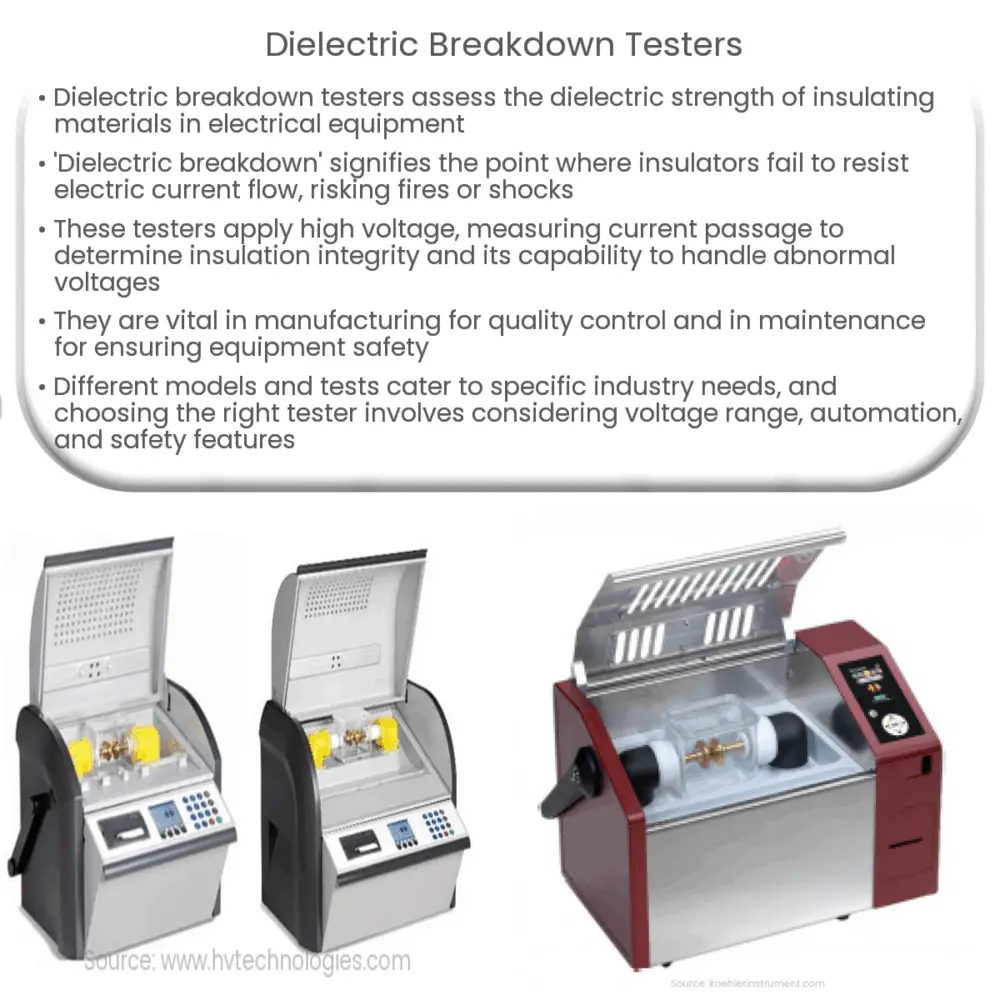Explore the essentials of dielectric breakdown testers, their role in quality control, key components, various tests performed, and factors to consider while choosing one.

Understanding Dielectric Breakdown Testers
Dielectric breakdown testers, also known as dielectric strength testers or hipot testers, are invaluable tools in the electrical industry. They play a crucial role in the quality assurance process, helping to ascertain the dielectric strength of insulating materials, be it in transformers, cables, or circuit boards.
Basics of Dielectric Breakdown
Before diving into the specifics of the tester, it’s critical to understand what ‘dielectric breakdown’ means. This term refers to the point at which an insulating material fails to resist the flow of electric current, thereby allowing electricity to pass through. This failure, often resulting from high voltage stress, can cause serious problems, such as fires or electrical shocks.
The Role of Dielectric Breakdown Testers
A dielectric breakdown tester applies a high voltage to the device under test (DUT) and measures the amount of current that passes through. It can, thus, detect defects in the insulation that may not be observable under normal operating conditions. It is essentially a pass or fail test, providing an indication of the overall insulation integrity and capability to withstand higher than normal operational voltages.
- Quality Control: Dielectric breakdown testers are predominantly used during the manufacturing process to ensure the insulation meets specific standards before a product is sent out.
- Maintenance and Safety: These testers are also used during routine maintenance checks to ensure ongoing safety and reliability of electrical equipment.
Key Components of a Dielectric Breakdown Tester
A dielectric breakdown tester typically consists of several key components:
- Voltage Source: This is a high voltage source that can be either DC, AC, or a combination of both, depending on the requirements.
- Measuring Device: This component measures the amount of leakage current flowing through the insulation when the high voltage is applied.
- Control Unit: It manages the voltage source and measuring device, usually providing an automated testing process.
While the basic principles of these testers remain constant, various models come with additional features like adjustable voltage levels, advanced automation, and data storage capabilities for analysis.
Understanding Different Types of Dielectric Breakdown Tests
Dielectric breakdown testers are used to perform several different types of tests, each designed to evaluate a specific aspect of the insulation.
- DC Dielectric Test: This test applies a direct current high voltage to the DUT and measures the resultant leakage current. It’s typically used for testing electronic components, where AC voltage could potentially damage the component.
- AC Dielectric Test: Here, an alternating current high voltage is applied. This test is commonly used in the electrical power industry for testing the insulation of power transformers and cables.
- Insulation Resistance Test: This test measures the resistance of the insulation under a constant voltage, usually a high DC voltage, to determine the insulation quality over time.
Challenges and Considerations
While dielectric breakdown testing is vital, there are some potential risks and challenges to keep in mind. For instance, the high voltage applied during testing can potentially cause damage to the DUT. Hence, it’s important to use appropriate voltage levels and safety procedures. Also, environmental factors such as humidity and temperature can influence the outcome of the test, necessitating controlled testing environments.
Choosing a Dielectric Breakdown Tester
When selecting a dielectric breakdown tester, consider factors such as the voltage range, the type of current it can deliver (AC, DC, or both), its ability to automate testing processes, and its data recording and analysis capabilities. It’s also essential to look at safety features, such as overcurrent and overvoltage protection, to prevent potential damage during testing.
Conclusion
In conclusion, dielectric breakdown testers are crucial devices in the electrical and electronics industry, providing a reliable method to evaluate the integrity of insulation in various devices and components. By understanding the basics of dielectric breakdown, the role and components of these testers, the different types of tests, and the considerations for choosing the right tester, we can ensure the safety and reliability of our electrical systems and devices.


